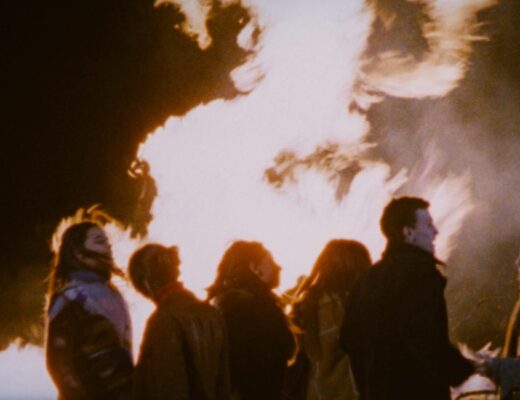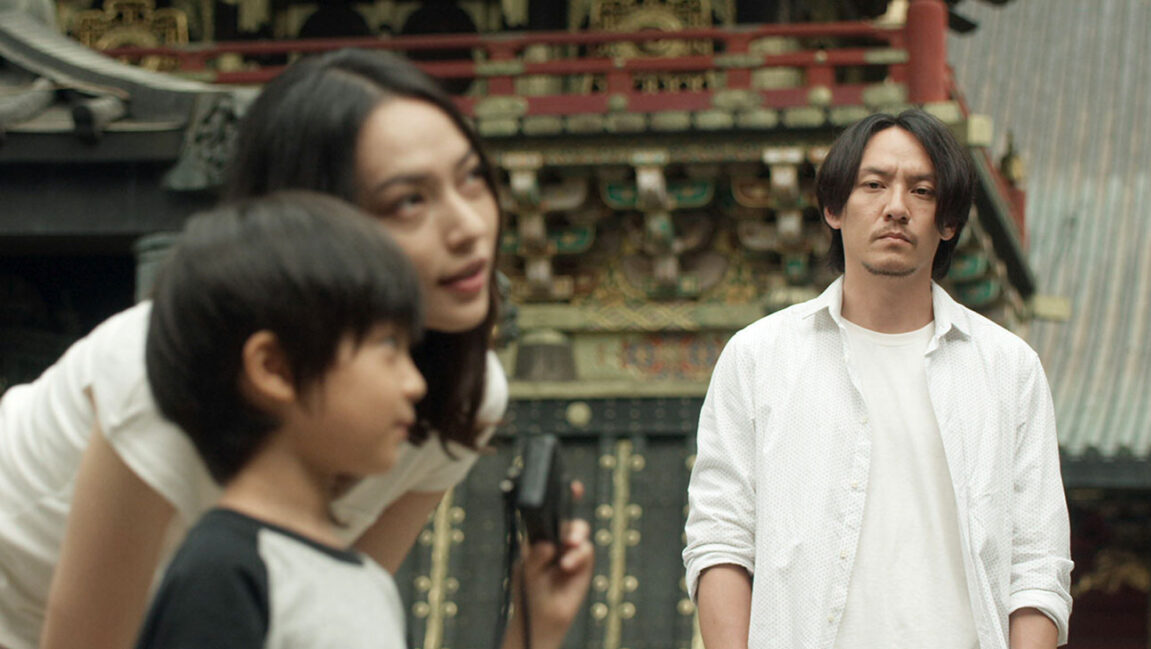To view history through the lens of the present frequently engenders all kinds of catharsis, from the moral smugness of the studio biopic to the intelligibility of unknown worlds for genuine, personal curiosity. This obsession with rendering the past clearer quickly extends to the literal: reconstructing dead pixels, embalming grayscale with imagined color, situating the viewer at an imagined, omniscient vantage point from which all its proceedings play out, unencumbered by subjectivity. Naturally, such obsession inevitably belies its illusory stature, and works as intended for many not aware of — or unbothered by — this circus act. But consider, then, a kind of antithesis to historical narrativization: what if the present day were to be filmed through past eyes? Oskar Alegría’s third feature, the quasi-onomatopoeically titled Zinzindurrunkarratz, undertakes precisely this task; setting out with an old Super 8 camera once belonging to his father, Alegría retraces its owner’s footsteps some 41 years prior in the Andia mountains of Basque, Spain. Delivering food and other necessities periodically to the region’s many shepherds, Alegría’s father was like a companaje, or companion, to many of them.
The camera of Zinzindurrunkarratz, likewise, accompanies the viewer along a jog through the filmmaker’s memory, although this memory isn’t particularly faithful, because it isn’t particularly real. Having salvaged some home movies from its reels, Alegría notes that the camera can no longer record sound, given the changes in Super 8 film stock from four decades ago. Midway through celebrations on New Year’s Day 1981, the old footage cuts abruptly, forever eliding something Alegría’s grandfather was about to say; this elision, however, serves as fodder for recreating the visuals of yesteryear. “The last image is this salmon-pink still. This is our starting point,” the director remarks, and heads down the path his father took through the valleys and their shepherds, most of whom are long gone. Accompanied by a donkey named Paolo, he captures the verdant, bucolic landscapes — and snippets of a way of life all but shuttered to the archives — in complete silence; sounds, sometimes corresponding to the visuals, are recorded separately and then interjected sporadically onto the dreamy film stock.
The juxtaposition of these “silent images” and “blind sounds” may justifiably be perceived as little more than dialectical exercise, although Zinzindurrunkarratz’s pilgrimage of history and memory stands out insofar as its fragmentary structure reflects an unconventional methodology. Its presentation is twice removed, first by the dissonance between temporal and filmic mediums, then by the separation of image and sound, each materializing nearly always in the other’s absence; the resultant footage is less than rhapsodic, and sometimes even frustratingly disjointed. At the same time, the film achieves a remarkable simplicity because of this. Its title roughly stands for three disparate natural sounds — “zinzin” after the valley winds, “durrun” for the echo of falling stones, and “karratz” from the sound of lightning striking — and calls to mind José Antonio Sistiaga’s 1970 …ere erera baleibu izik subua aruaren…, an equally radical work of hand-painted celluloid whose nonsensical title draws from Basque phonetics. “More difficult than never arriving is always being at the beginning,” muses Alegría on the uncertainty and openness of his experimental journey, but this is a film about nomadism and the ephemeral after all — so why should it not be? In inventing the lost gestures of a time no longer, Zinzindurrunkarratz comes closest to finding them.
Published as part of DOCNYC 2023 — Dispatch 2.







